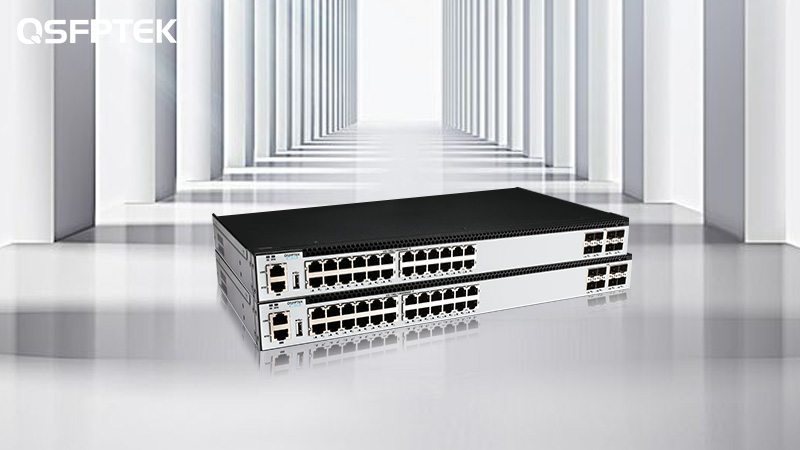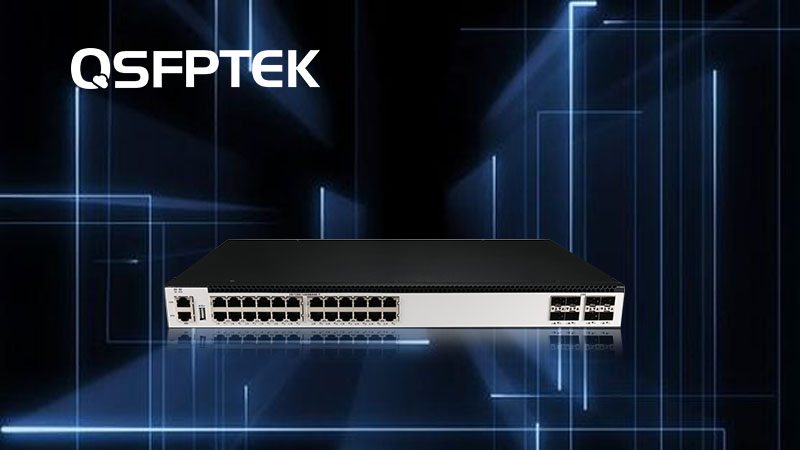Data Center Switch Wiki And Devices Choosing Guide
Data center switches are designed with a focus on data and storage for specific mission-critical applications, unlike traditional three-tier layered networks where switches are designed for dedicated layer use, the data center switch has appeared as a new category switch. With a multitude of switch vendors and an overwhelming number of options, it is crucial to select a switch that meets your requirements. In this article, we will delve into the definition of a data center switch and guide you on how to choose the appropriate one.
What Is a Data Center Switch?
Data center switches provide significantly superior performance compared to regular switches and are primarily employed by large corporations and cloud service providers that have high virtualization needs. As the name suggests, the data center switching is typically deployed in data centers utilizing a fixed two-tier (spine-leaf) or one-tier flat network or fabric architecture. Some typical attributes of datacenter switches are outlined below:
They are capable of managing traffic in both the north-south and east-west directions.
Switches inside a data center can only be used in top-of-rack (ToR) and end-of-row (EoR) architecture.
High-bandwidth interconnections, such as LAN Ethernet protocols and SAN protocols like Fibre Channel and Fibre Channel over Ethernet, are supported by data center switches.
Managing all components of a distributed data center switching is made much easier with a single management interface that can handle all tasks.
Factors Need to Consider When Purchasing a Switch In Data Center
If you're in the process of buying a new datacenter switch device or upgrading your current network infrastructure, you may feel uncertain about selecting the appropriate data center switch. To assist you in making a better decision, the subsequent section will outline key factors to consider when you're looking for a switch to help you choose the right switch.
Functions
Switches in datacenter share common functionalities, including the use of standard protocols and maintenance of MAC address-to-port tables. However, different switches possess distinct characteristics depending on their intended use cases and applications. To determine the necessary functions, you have to consider these questions: Will enterprise-level applications be utilized? Is redundancy being considered? Is a virtualized infrastructure in place? For instance, a dependable data center switch should possess automation capabilities and support newer protocols like EVPN and VXLAN. Additionally, some data center switches offer simple management through support for Ansible/OpenFlow configuration and automation tools.

Size, Data Rate, and Number of Ports
Selecting the appropriate size for datacenter switches hinges on the current and anticipated data flow. Although larger switches can fulfill both present and future demands of switch data center locations, they necessitate additional resources for installation. On the other hand, smaller switches are more cost-effective but require installation in a top-of-rack arrangement to avoid bottlenecks.
To ensure a successful installation, it is essential to meticulously evaluate the required fiber connections ahead of time. Fiber connectivity choices include 10Gbps, 25Gbps, and 40Gbps, with 100Gbps are increasingly prevalent in most data centers. Furthermore, hyper-scale data centers are adopting 400Gbps, leading to the creation of 400G data center switches.
Switches in data center are available in various port types and quantities, which impact the necessary cabling and transceivers. Therefore, assessing current and future needs is critical when making a determination.
Hardware and Software
Due to the growth of cloud data centers and emerging trends in virtualization and new applications, there is a surge in new data center switching types entering the market. These include open OS white box switches and bare metal switches. These options provide network engineers with a cost-effective and flexible alternative to brand-name switches, especially in high-traffic data centers. It is important for data center upgrades to consider the brands of switches and OSs currently used on the network. Here are some parameters of QSFPTEK data center switches:
Data Center Architecture and Configuration
In modern data center designs, a spine-leaf architecture is commonly utilized where switches at each tier have distinct requirements. Typically, spine switches possess superior traffic-handling capabilities, higher capacity, and better performance compared to leaf switches.
The selection between top-of-rack (ToR) or end-of-row (EoR) configurations plays a crucial role in determining the appropriate data center switching to be used. If end-of-row network cabling already exists, it is recommended to opt for a higher-capacity EoR switch and leverage the existing cabling. However, if a new data center or cabling is being established, ToR switches should be utilized to allow greater flexibility in terms of physical port coverage throughout the data center.

Switch Vendor
After taking into account some important factors mentioned previously, you might have some ideas on how to choose a data center switch. However, keep in mind that data center switches can vary in terms of performance, price, and technical support services, depending on the quality of the vendor offering the product. Data center switches are important in data centers, so ensure that your vendor can provide you with excellent service and high-quality products before making a purchase.
During the selection process, it's essential to consider user reviews and the supplier's reputation. Evaluate the supplier's level of service by assessing their software configuration improvement services, hardware stocking and replacement, and technical support for troubleshooting. With the emergence of SDN, choosing a switch from a different vendor may be an option. However, unless you are using a truly open SDN platform, purchasing from a single vendor is a better choice and will save time and costs for subsequent maintenance after-sales. Among data center switch vendors, QSFPTEK network switch vendors can offer you S5600 and S7600 series data center switches with rich features, high-quality products, and fast response technical support services.
Cooling and Airflow
To ensure optimal airflow and cooling in a data center, it's crucial to consider the installation and connection of switches before purchasing them. Inadequate cable management may obstruct airflow, leading to excessive heat in the working environment can result in shortened switch life and premature mechanical failure
Different switch placement positions also affect the airflow direction in the data center. When the switch is connected in front of the server, the cooling airflow is from front to back. When the switch is connected to the back of the server, the cooling scheme is from back to front.
Choosing The Right Data Center Switch
Based on this article about key reference factors for data centers, you should have an initial understanding of how to buy a data center switch. When picking a reliable data center switch from the overwhelming Internet information, you may want to refer to the advice of professional technicians who will have a better understanding of various technical terms, including buffer size, latency, and various data center switch features. QSFPTEK offers S5600 and S7600 series data center switches, and we offer a five-year warranty, and 15-day return service, as well as several professional technicians to provide you with free information and consultation services to help you choose the right product.











